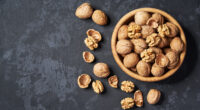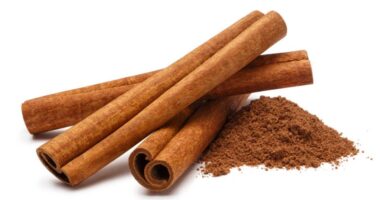1. Turmeric has been proven to help with pain relief
Turmeric is as effective as an anti-inflammatory drug in alleviating knee osteoarthritis pain.
A randomized study with 139 participants was conducted to evaluate the effectiveness of curcumin versus the anti-inflammatory drug diclofenac in the treatment of knee osteoarthritis.
For 28 days, some participants were given a 500-mg curcumin capsule three times daily, while others were given a 50-mg diclofenac tablet twice daily.
Assessments were performed at the start of the study as well as on days 7, 14, and 28. Participants taking curcumin experienced pain relief comparable to those taking diclofenac after 14 and 28 days.
The difference in treatment was not statistically significant. Curcumin has been shown to be just as effective as diclofenac in relieving knee osteoarthritis pain.
The participants also displayed better tolerance towards curcumin when compared to diclofenac. This makes curcumin a viable alternative treatment option for people with knee osteoarthritis who are not able to tolerate non-steroidal anti-inflammatory drugs.
Turmeric better than placebo for knee osteoarthritis pain
Another study revealed turmeric to be more effective compared to a placebo for lessening knee pain in individuals with knee osteoarthritis.
In the study involving 70 individuals with osteoarthritis of the knee, researchers tested the efficacy of turmeric in reducing knee pain and swelling. Participants were given either 100 mg daily or a placebo for 12 weeks to evaluate if turmeric had any effect on their condition.
The effects of a 12-week treatment were evaluated using questionnaires, MRI scans, and other tests. These included assessing changes in pain swelling volume, cartilage composition, quality of life, and physical performance levels, as well as tracking the usage of any pain medications taken and any adverse events.
After 12 weeks, it was observed that the individuals taking turmeric supplements experienced less pain compared to individuals in the placebo group while having no adverse effects. Moreover, people in the turmeric group also needed to consume fewer analgesics compared to the participants given placebos.
2. Boswellia has been proven to help with pain relief
Boswellia relieves osteoarthritis pain.
A study involving 70 participants suffering from osteoarthritis revealed that taking Boswellia serrata, an herbal remedy, led to remarkable improvement in the condition within just seven days. The study was designed as a randomized, double-blinded and placebo-controlled trial.
In the group who received 250 mg of Boswellia serrata extract, significant reduction in symptoms of pain and functional ability were seen as soon as 7 days after starting treatment.
The researchers noticed a significant decrease in synovial fluid matrix metalloproteinase-3 a, which corroborated he in pain score improvement within the treatment groups.
Osteoarthritis is the most commonly seen type of arthritis and primarily impacts joints like hips, knees, wrists, hands, feet and spine. People suffering from this condition may experience pain and stiffness in these areas and limited mobility.
A systematic review and meta-analysis of boswellia for osteoarthritis
A meta-analysis was conducted which included data from various clinical trials to analyze the impact of Boswellia or its extract compared with western medicine and placebo in individuals suffering from osteoarthritis.
The meta-analysis included 545 participants from 7 studies and revealed that Boswellia and its extract can be beneficial for reducing pain and stiffness in joints, as well as improving joint function.
3. Ginger has been proven to help with pain relief
Ginger helps to reduce muscle pain.
Research has been conducted to determine the effects of ginger supplementation on exercise-induced pain. Two separate studies consisting of a total of 74 volunteers were conducted to investigate the effect of daily ginger consumption on muscle post-exercise pain.
The participants ingested either 2 grams of ginger capsules or a placebo pill, for 11 days straight. On the 8th day, they conducted 18 elbow flexor extensions with a heavy weight to deliberately cause slight damage to their arms.
Arm function, inflammation, and a biochemical associated with pain were also evaluated both before and after exercise. Results showed that ginger helped substantially reduce muscle pain caused by physical activity. It was revealed that daily ginger intake can reduce this kind of pain by up to 25%.
Ginger helps to alleviate ostearthritis pain
Another study looked at 261 individuals affected by osteoarthritis of the knee and chronic pain. After 6 weeks, it was seen that taking concentrated doses of ginger extract had a significant effect in reducing the symptoms of osteoarthritis.
Results from taking ginger root extract showed alleviation of knee pain when standing or walking. Any side effects were limited to mild abdominal discomfort.
4. Pine bark extract has been proven to help with pain relief
Pine bark helps to cramps and muscle pain.
Research has demonstrated that supplementing with a pine bark extract can help improve blood circulation to muscles and thereby reduce recovery time after exercise, helping to reduce cramps and muscle pain in athletes as well as healthy people.
Two studies were conducted to evaluate the effectiveness of pine bark extract for cramping and venous disorders. The 1st study involved 66 individuals who experienced occasional cramping, had venous problems or were athletes suffering from cramping induced by exercise.
For the initial 2 weeks of the study, participants were observed without any pine bark extract supplementation. During this time, signs connected to venous conditions and the frequency of cramping episodes per participant were recorded.
Following 4 weeks of supplementation with 200 mg of pine bark extract daily, the participants underwent a further week in which they refrained from taking any pine bark extract. During this time, the severity and frequency of their symptoms and cramping episodes were documented.
The researchers observed a substantial reduction in cramps for individuals supplementing with pine bark extract. Those who had already been suffering from normal cramps saw a 25% reduction in their cramping levels when taking pine bark extract.
Individuals with venous insufficiency who took pine bark extract saw a 40% decrease in the number of cramps. Athletes with regular cramping episodes also reported a 13% decrease in the frequency of such occurrences.
The 2nd study included 47 people suffering from diabetic microangiopathy, which is a dysfunction of the smallest blood vessels related to diabetes, or a blood vessel condition resulting in cramps in the legs known as intermittent claudication.
This research project had three phases: a 2-week pre-trial period of observation, one week of supplementation with 200 mg of pine bark extract per day for 1 week, and finally a week when no supplement was taken.
Results showed that individuals suffering from diabetic microangiopathy and claudication had a reduction of about 21% in their pain after supplementing with pine bark extract. Those who took a placebo had no such reduction in pain.
5. Willow bark has been proven to help with pain relief
Willow bark helps to alleviate osteoarthritis pain.
A study was conducted to investigate the therapeutic potential of willow bark extract in treating osteoarthritis. The clinical trial, lasting two weeks, was done in a double-blind, randomized controlled manner and examined the effects of a willow bark extract equivalent to 240 mg salicin/day against a placebo.
The primary measure of success in this study was the WOMAC Osteoarthritis Index which evaluated the pain levels of participants.
To assess the impact of the treatment, secondary measures were taken into consideration. These included evaluating stiffness and physical functioning through WOMAC, daily pain and physical function visual analog scales, and patient and researcher’s overall assessment.
78 people took part in the trial and it was found that there was a difference that was statistically significant between the group who received the active treatment and those who had taken a placebo when evaluating the WOMAC pain dimension.
After two weeks of active treatment, the WOMAC pain score decreased by 14% from its original level, while the placebo group only improved by 2%. This suggests that willow bark extract is moderately effective in relieving osteoarthritis pain and was tolerated well.
Willow bark could help alleviate chronic back pain
Another study was conducted to determine if willow bark extract can be an effective remedy for lower back pain.
210 people suffering from chronic low back pain were recruited by researchers. All the participants reported a pain level of 5 or above on a 10-point visual analog scale.
This study involved participants randomly receiving one of three treatments: 120 mg, 240 mg of willow bark extract, or a placebo. Tramadol was used as the rescue medication and the trial was carried out over 4 weeks in a blind manner.
The main result of the study was to measure how many patients were free from pain for at least five days during the last week without using tramadol.
A larger number of participants in the placebo group needed to take tramadol during the study. The findings suggest that willow bark extract could offer a safe and viable solution to people suffering from low back pain.
READ NEXT: Can Antibiotics Cause Inflammatory Bowel Disease? Find Out Here!









